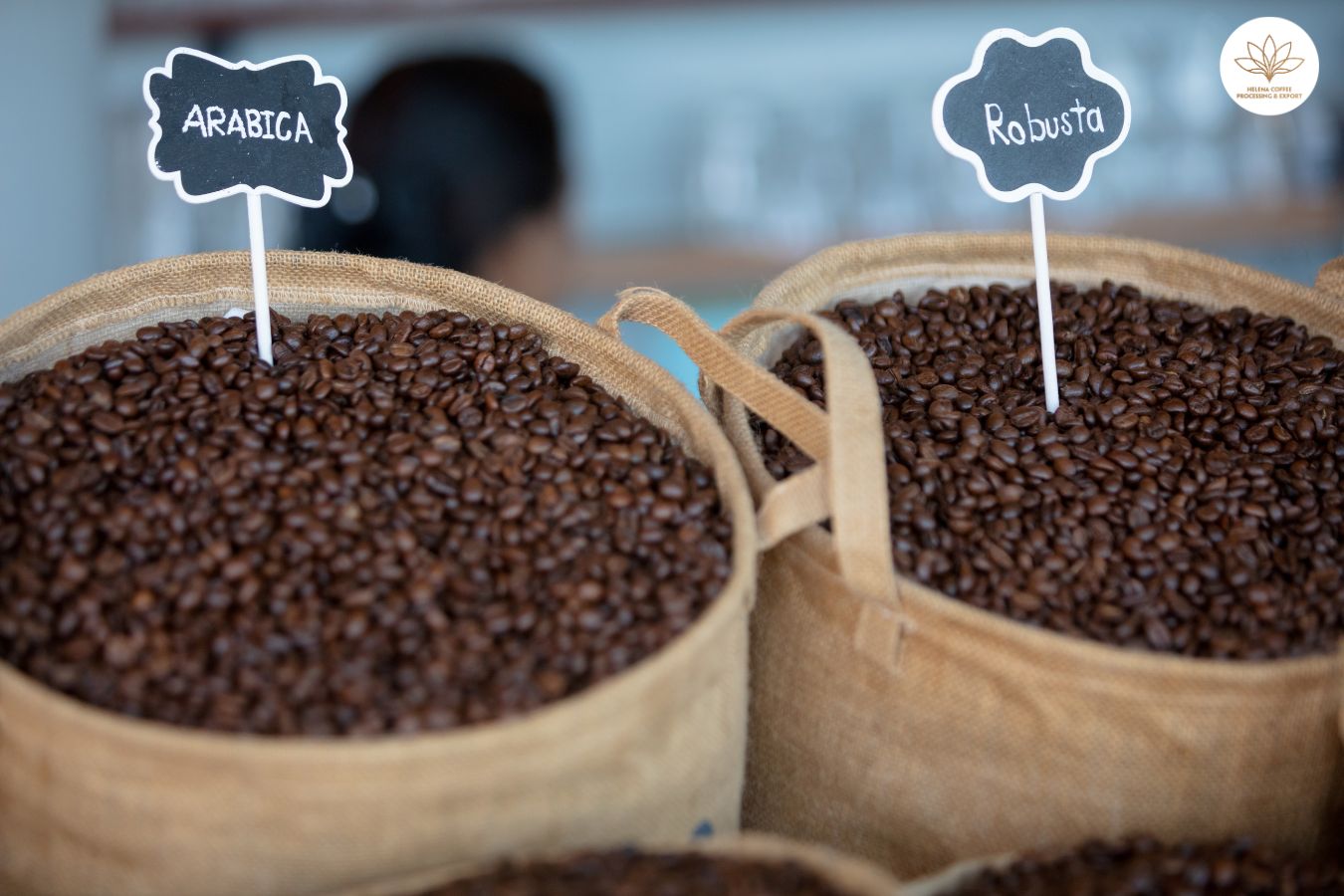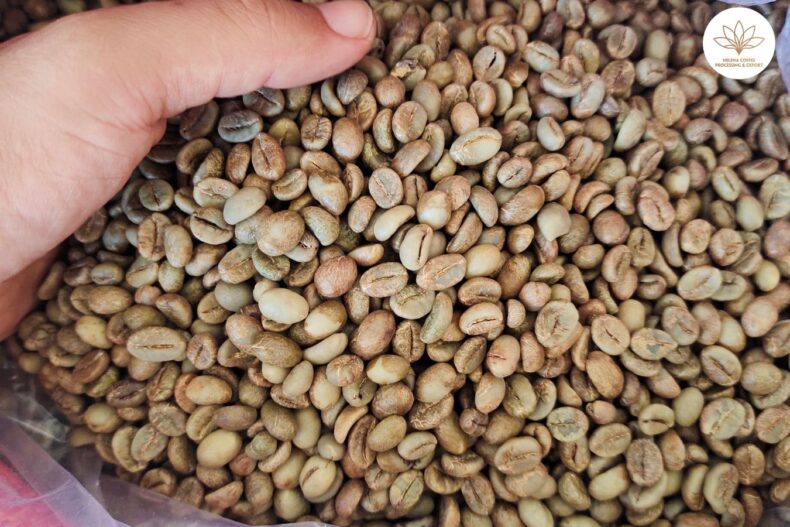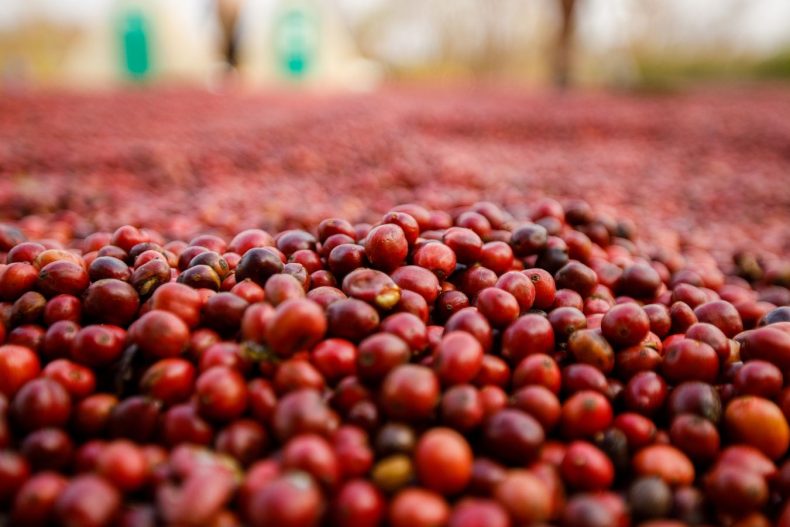
History And Origin Of Robusta Clean: Robusta, also known as Coffea canephora, along with C. Arabica, is one of the two main commercially grown coffees in the world. Robusta is also the main variety of Vietnam’s coffee industry, contributing to holding the 2nd position in coffee production. However, it is also important to know that Robusta accounts for less than 30% of the total global coffee production structure, the rest belongs to Arabica and its subvarieties.
Origin of species
Coffea Canephora – Robusta coffee was first discovered in Congo – Belgium (in Africa) in the 1800s. Coffea canephora is also a tree native to the rainforests around Lake Victoria in Uganda. Robusta coffee was introduced to Southeast Asia in the 1900s, after Coffee Leaf Rust wiped out all Arabica varieties in Sri Lanka in 1869 (or 1867 according to Wiki), and attacked most plantations in Java – Indonesia in 1876.
Currently Robusta accounts for between 30% and 40% of the world’s total coffee production, popular in West and Central Africa, Southeast Asia, Central – South America mainly Brazil (where it is known as Conillon).
The popularization of the Robusta coffee plant began near the Lomani River, a tributary of the Congo River in Central Africa. Through a nursery in Brussels, Robusta coffee from Congo (Democratic Republic of Congo) was shipped to Java. From here, it was successfully bred to establish plantations in other countries such as India, Uganda and Ivory Coast
Central Africa is considered the source of two main commercial coffee species: Coffea arabica (Arabica) and Coffea canephora (Robusta). Although Robusta has long been considered the ugly cousin of Arabica, recent studies suggest that this is in fact not the case. It turns out that Robusta is actually the parent of the Arabica variety. By analyzing the genome sequences of coffee species, scientists have found that, in southern Sudan, Coffea canephora has crossed with another species called Coffea euginoides to give birth to Coffea arabica
Botanical distribution and characteristics
Robusta farming was initiated in the early 19th century – as noted above – because of the significant damage caused by CLR to C. rabica plantations in Asia. According to reliable documents (Charrier and Eskes, 1997), Robusta coffee was brought to Java, Indonesia in the 1901 Democratic Republic of the Congo (Republic of the Congo). These Robusta plants quickly became available in Africa and were adopted by early African farmers due to their vitality, yield and resistance to CLR. At the same time, several other species of Robusta such as Kouillou, Maclaudi & Game, Niaouli or Coffea ugandae are also deployed in different countries such as Ivory Coast, Guinea, Togo or Uganda, respectively.
Since the 1960s, new clonal breeding lines of Robusta have been developed in Uganda, Congo, and later in Ivory Coast. However, not much has changed in character compared to the original plants. Today, only a few countries continue with the selection program for trade, with some improvement. Typically, in Ivory Coast – where productivity is increased from 30% to 110% and grain size is increased by 50%. Several new varieties were also developed in Brazil where it was called Conillon.
Botanical features
Even if some coffee trees are found up to 2300m above sea level, most species (67%) are adapted to altitude limits of less than 1000m. And Robusta is typical in that “adaptable” group, so they are grown in areas lower than Arabica (only in the range of 0 – 800m). In return, Robussta requires quite heavy rainfall (from 1200 – 2500mm) therefore, most species with a wide distribution in the African continent (i.e. C. canephora, C. eugenioides) are usually found in humid environments.
Robusta coffee has some outstanding advantages compared to Arabica coffee plants such as the ability to fight rust (Coffee Leaf Rust), stem borer, nematode diseases ,.. and yields much higher than Arabica coffee. For these reasons, the cost of growing Robusta is relatively low compared to the Arabica variety. On the other hand, the inability to tolerate prolonged drought conditions, poor cold tolerance (minimum temperature prefers between (18 – 36oC), unstable yield compared to Arabica, here are some of the negative attributes of Robusta coffee.
Robusta coffee flavor characteristics
The taste of Robusta coffee has always been considered inferior to Arabica so far. The taste is generally darker, acrid and much more bitter than Arabica. Since Arabica coffees are said to have a smooth taste with higher acidity and a richer flavor, they are generally considered premium. In addition, Robusta coffee growing and processing areas mostly focus on dry processing (instead of wet processing like Arabica varieties), resulting in a more bitter taste, smelling from grain to wood, soil after roasting.
In nature, chlorogenic acid (CGA) and caffeine play a role in helping coffee plants fight insects. So they are more “Robus” (that is, healthy) than Arabica
A note on the “bitterness” of Robusta
It should be understood that, despite being called “Acid”, Chlorogenic Acid (CGA) is not characterized by “sourness” but rather “bitterness”. During the roasting process, CGA will decompose to form caffeic acid and quinic acid (about 50% of the original CGA is destroyed in a medium-roasted seed). Along with caffeine – these substances cause the harsh bitter taste often found in Robusta. That’s why we later said Robusta has twice as much acid — but it’s actually not sour, it’s more bitter than Arabica (according to coffeechemistry).
However, in return for the loss in taste, Robusta coffee has an average caffeine content twice as high as Arabica (2%-2.5% vs. 1.1%-1.5%). Therefore, the combination of Arabica coffee with Robusta gives a relatively higher quality combination than Arabica coffee, because of this, Italian coffees (Espresso) always have 10-15% Robusta coffee to enhance the flavor and create a more attractive Crema layer.
And from production practice, Robusta coffee when processed wet can give higher quality than regular Arabica varieties (because Arabica has many varieties and not all types are good). So the comparison between Arabica and Robusta is sometimes not entirely accurate.
FAQS:


